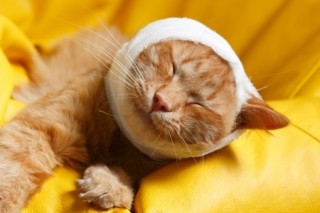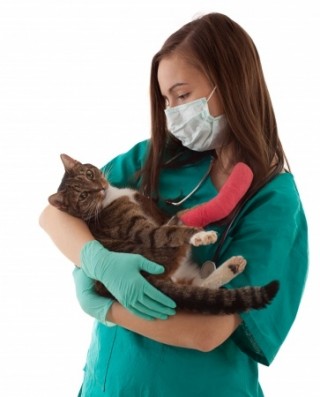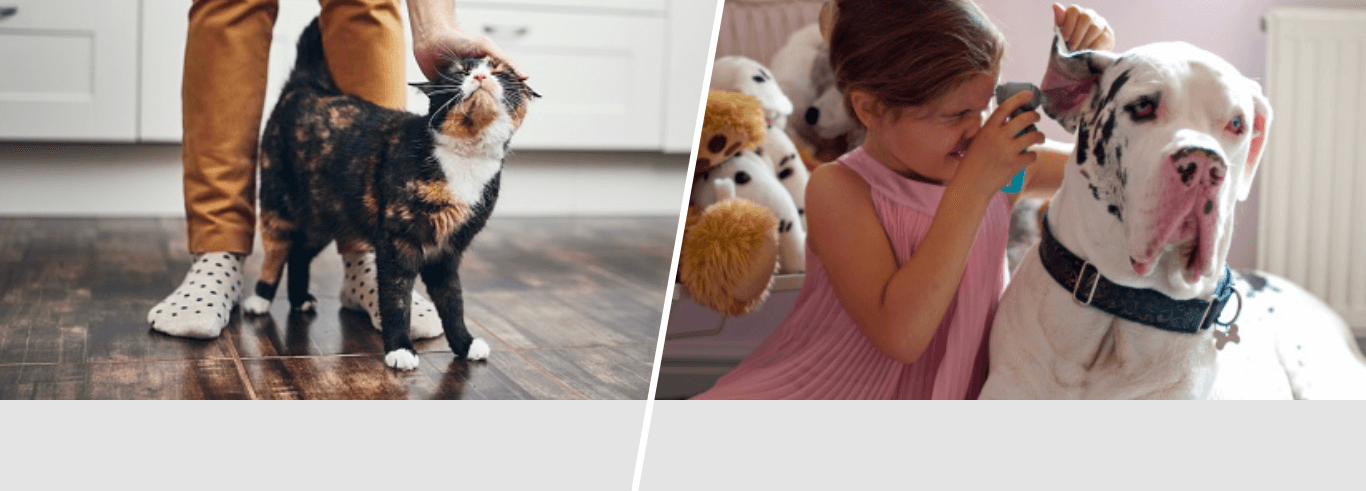An introduction to minor cat cuts and wounds
Minor cat wounds can be suffered by both active and quiet cats: including cuts, tears, scrapes, bites and punctures. You may know exactly how the wound happened, if you saw them standing on a piece of broken glass, or your cat may simply have returned through the cat flap with an injury of unknown origin. Basic first aid principles can be followed, whatever the cause.
How to care for a cat wound
Before attempting any first aid on your cat consider the fact that even the mildest of cats may attempt to scratch or bite in a stressful or painful situation. You should firstly get somebody else to help restrain your cat while you take a look at the wound. Wrapping your cat in a towel can be a useful approach, so long as no smothering occurs and somebody is there to help calm him or her down. Also, holding the cat firmly by the scruff of the neck or on the floor can work to restrain an agitated cat that is in danger of hurting themselves more.

Bleeding
A wound may be bleeding which can appear light or heavy. Either way, it is important that the bleeding is stopped as quickly as possible. A little bit of blood can go a long way and it is unlikely to be life threatening if dealt with promptly. If possible, pressure should be applied directly to the wound for a minimum of 10-15 minutes. This is best done using a clean dry cloth/gauze pad – a clean tea towel would be ideal. Do not attempt to use a tourniquet. If the bleeding is that heavy then veterinary attention should be sought immediately.
If the wound begins to bleed through the cloth then do not remove the dressing. This may displace any blood clots and potentially restart the bleeding. Simply add an additional dressing or padding over the top of the first one. If the area is suitable then a bandage can be applied on top of the dressing.
You should stay with your cat and help him or her to stay calm and stationary. When the bleeding has stopped then the wound can be examined.
Cat wound examination
Cat wounds can be sore and an examination should start with just taking a look. Some wounds may be full of dirt or grit that need to be cleaned away. However, any objects larger than dirt or grit in the wound such as glass, should be left to your vet to remove. It is important to be as gentle as possible at all times and keeping your cat calm will make the process much easier.
Bite wounds from other cats are very common in outdoor cats. If you find a small circular wound, then look closely for other holes as they tend to come in pairs. Cat bites can cause abscesses and many owners are not aware of their presence until they burst. Abscesses will appear as a rough edged hole that is inflamed and discharging pus which is often foul smelling. You may have noticed that your cat has been quiet and off their food for the preceding days. The infected area may also have been sensitive to touch.
Clipping and shaving
Ideally use hand clippers to shave the hair from a wound (if you don’t have one, blunt ended scissors may do). Be very careful and if you have any doubts, do not cut, as owner inflicted wounds happen with surprising regularity.
Try to shave/trim away the hair from around the wound to a minimum distance of 2-3 cm. Sometimes further injury becomes obvious when the hair has been removed such as bruising. It is also useful to trim back any longer hairs close to the wound that may fall on it and cause contamination. Be gentle as the skin around the wound is often sensitive and easily damaged. A little bit of Vaseline placed into the wound first can help catch any stray hairs and can then be gently removed afterwards.

How to clean a cat wound
Next, the wound should be cleaned to remove any contaminants. If you have any chlorhexidine or povidone-iodine then this can be used as cat wound treatment. Dilute in water with just enough to discolour the water and no more. Alternatively, a saline solution can be made using a teaspoon of salt added to a pint of cooled boiled water.
Do not be tempted to use human products such as creams, ointments or disinfectants such as Savlon, as they can be potentially irritating and toxic if the animal licks the wound.
Cleaning is a ‘flushing’ process to remove contaminants such as grit and does not involve physical rubbing (which may drive contaminants further into the wound and cause secondary problems such as infection.). After flushing, gently ‘blot dry’ the wound and the surroundings to remove any antibacterial wash or saline. This flushing is essential, as cats are big groomers and will be drawn to the area. So ensure the area is well rinsed and try to prevent the cat from licking as much as possible.
Please note: Any suspected cat bite wounds should be well bathed once or twice a day.
How to dress a cat wound
A minor wound is best left to heal uncovered but larger wounds may benefit from a dressing e.g. gauze pad taped onto skin clipped of hair. The best tape to use is the ‘micropore’ type as the ‘Elastoplast’ ones will stick too firmly to the cat’s skin and may cause damage on removal.
After cleaning, the wound may be dressed. A minor wound is best left to heal uncovered but larger wounds may benefit from a dressing e.g. gauze pad taped onto skin clipped of hair.
Some areas of the body are easy to dress such as legs, but others such as tails and ears are more difficult. With any wound that your cat may be able to reach and lick, it may be sensible to purchase an Elizabethan collar (make sure this is fitted correctly according to instructions). A cat’s tongue is a potential source of harmful bacteria and the tongue is abrasive so the licking action can irritate a wound and cause infection.
Please note that should bleeding wick through your initial dressing then do not remove the dressing as you may dislodge any clots formed.
Aftercare
Cleaning cat cuts and wounds should be performed at least 1-2 times a day for a few days, until the wound appears to be healing. The wound should be regularly monitored and closely inspected.
If your cat develops any swelling, heat, pain or becomes unwell it may be a sign of infection and veterinary attention should be sought. Owners should monitor for discomfort with the bandage, such as excess chewing. Wounds to limbs should be checked to ensure that the foot of the injured limb is the same temperature as the other limbs and that weight bearing on the legs is possible.
While you may be able to treat some minor wounds at home, there are some wounds that should be left to the vet. Therefore, it’s important to protect yourself from unexpected vet bills with Argos Pet Insurance provided by Pinnacle Insurance Ltd. Explore our cat insurance policies today.
Argos Limited is an Appointed Representative of Home Retail Group Insurance Services Limited (HIS). HIS is authorised and regulated by the Financial Conduct Authority (register number 314050). Registered office: 33 Charterhouse Street, London, EC1M 6HA (registered in England and Wales, no 04109436). HIS act as an introducer to Pinnacle Insurance Ltd, who sell, administer and underwrite the policy and who are authorised by the Prudential Regulation Authority and regulated by the Financial Conduct Authority and the Prudential Regulation Authority (register number 110866). Registered office: 4th Floor, Limelight, Elstree Way, Borehamwood, Hertfordshire, WD6 1JH (registered in England and Wales, no 01007798). HIS and Pinnacle Insurance Ltd are not part of the same corporate group.
We do not provide personal recommendations to customers.




